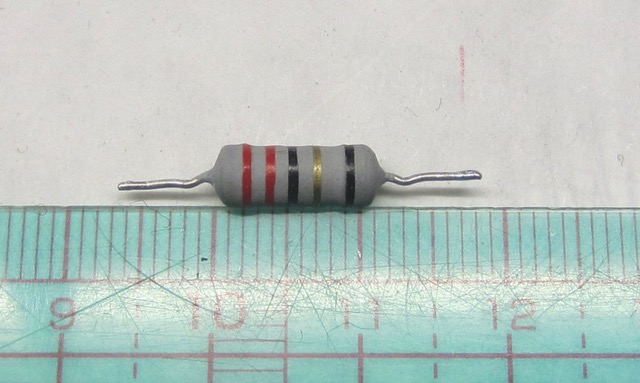 I have a resistor from a portable heater which has gone open circuit. I would like to replace it but I couldn't find the same resistor.
I have a resistor from a portable heater which has gone open circuit. I would like to replace it but I couldn't find the same resistor.
It has a normal 4 ring value, but then has an extra black ring. I think the first 4 bands mean it is 22ΩR, ±5%, and might the last ring might mean it is non-inductive?
The diameter is about 4.5 mm. The length is about 11.5 mm. Not sure with the wattage as it is slightly bigger than 1W resistor but smaller than 2W.
Can anyone confirm meaning of 5th band, and suitable replacement?

